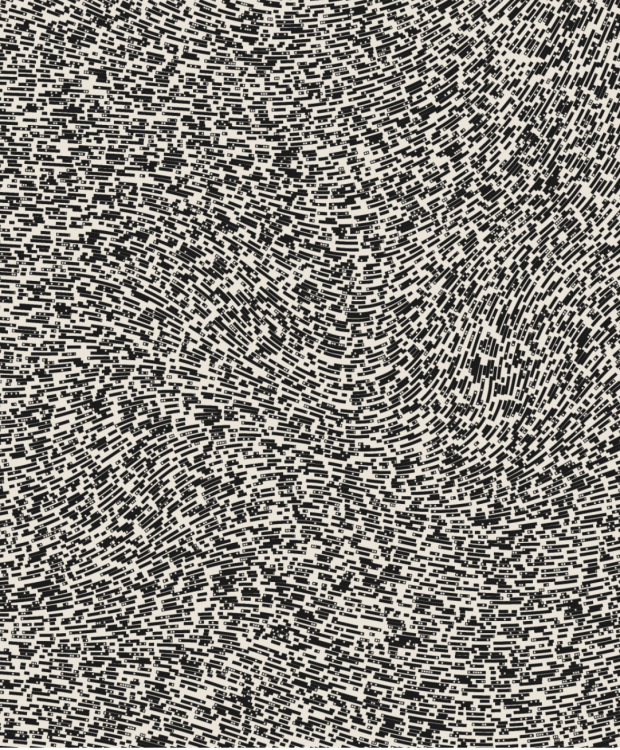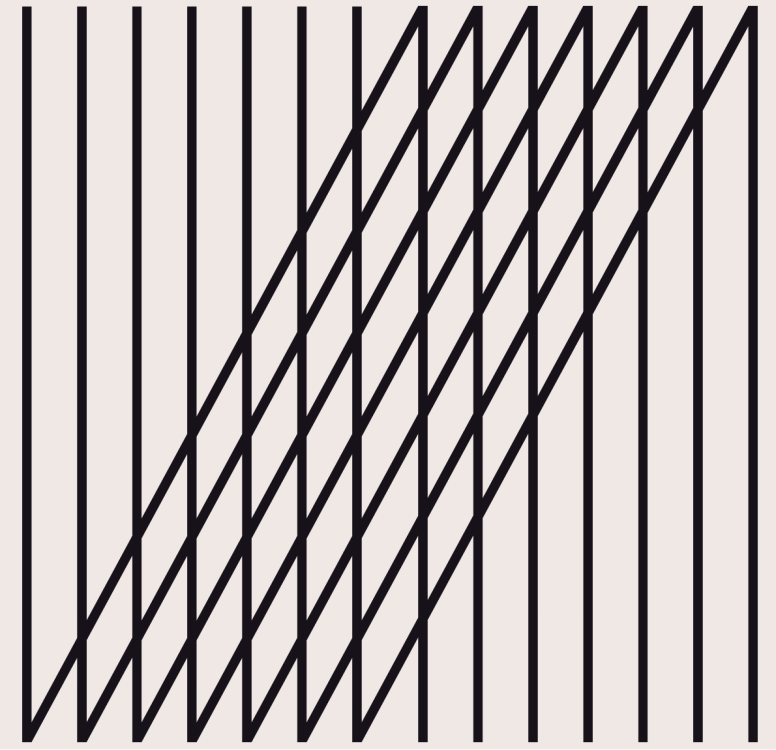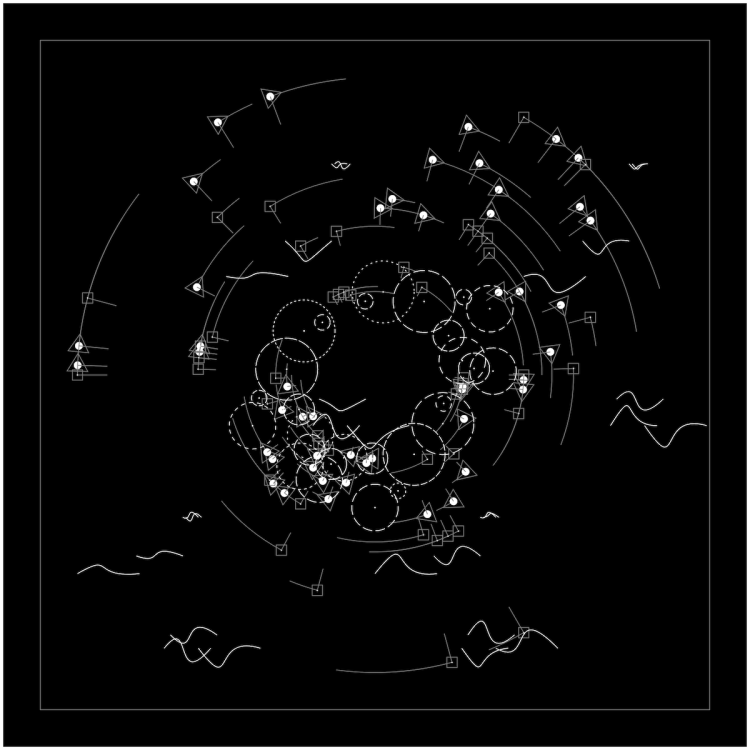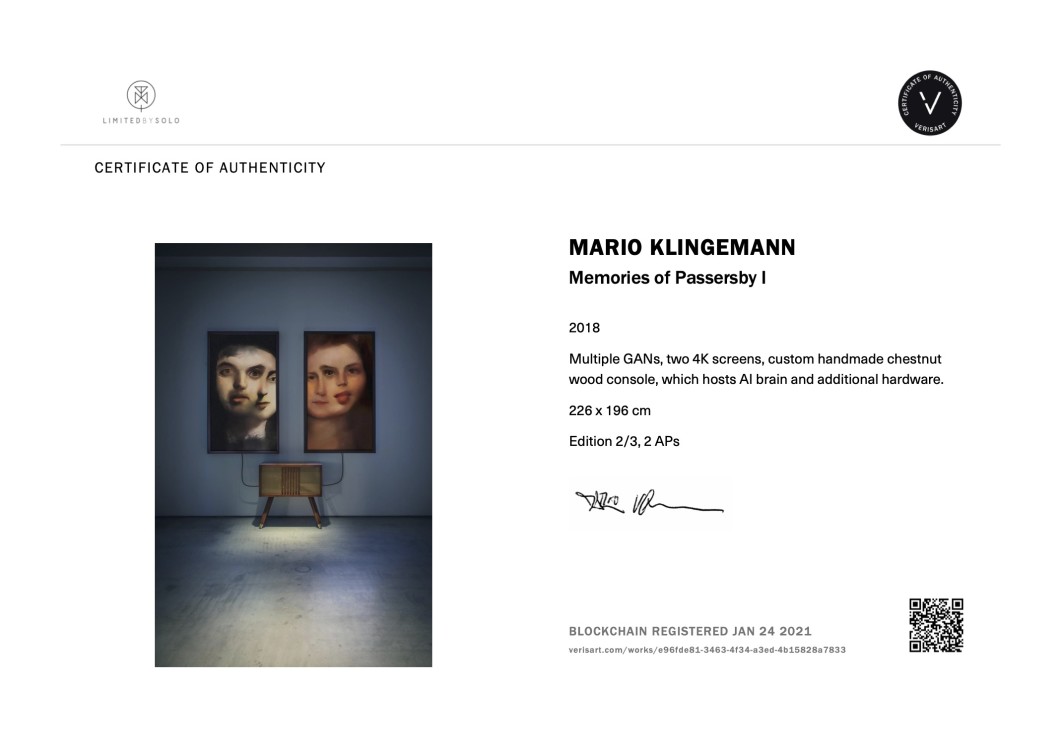Group 1873
From Canvas to Code: How Generative and AI Art Are Reshaping the Art Market
AI's impact on the art world is exemplified by generative art NFTs, which blur the boundaries between technology and creativity, prompting discussions about their place in art history and the market's response to them.
What is art? The answer to this eternal question is defined and redefined with each new innovation. But while all new technologies challenge our collective assumptions about what constitutes creative output, none have been as hotly contested as artificial intelligence (AI). From generative art to the output of prepackaged generative adversarial networks (GANs), AI generated artwork can take many forms. As artists explore these new tools, the medium runs the risk of being denounced as a bubble like its accompanying monetization mechanism in the form of non-fungible tokens (NFTs).
Despite the NFT rollercoaster ride resulting in a change of language from NFT to digital art or digital collectibles, the traditional art world is embracing blockchain for provenance and NFTs as the preferred certification and monetization standard for digital art and specifically generative art.
With roots in the ancient arts of Islamic tiling and basket weaving and its clear connection to instruction based conceptual artists such as Sol Lewitt, the modern format of generative art as code has found symbiosis in NFTs and been accepted by the world’s leading auction houses as the latest manifestation of the art form with an illustrious history.
And though hysterical headlines are quick to pronounce the scene dead, recent generative art sales can attest that generative art NFTs are alive and well.
What Bear Market?
While the broader crypto market is still in recovery mode after last year’s crash and floor prices for memes are a long way off their previous highs, the digital art world is starting to correct itself. Last month Dmitri Cherniak broke his previous auction record with the sale of his iconic Ringers #879 (The Goose) fetching $6.2 million and becoming the second most valuable generative art piece ever sold.

“The record-setting result of the live auction, in addition to the first tranche of works sold in May, reflects the growing importance of digital art, and in particular generative art, as a critical form of contemporary art. As the sale proved, works of exceptional quality continue to command the attention of serious collectors, with many setting significant new benchmarks for the artists since the peak of the market in 2021.” said Michael Bouhanna, Sotheby’s Head of Digital Art & NFTs.
Other leading generative artists, such as Snowfro and Tyler Hobbs also set new records for their works and massively exceeded auction estimates.


While these artists are all household names to Art Blocks, the foremost generative arts platform with an impressive trading volume of more than $1.3 billion in the last couple of years, many are new to the traditional art world and often choose to work outside the gallery system.
Sotheby’s have been actively reaching out to this new generation of generative art collectors and recently announced a generative art program with Art Blocks. The auction house is working with famed artist Vera Molnár to inaugurate its Gen Art Program with a collection entitled Themes and Variations: 500 Unique Generative Outcomes scheduled for auction on July 26. The 98-year-old artist, a pioneer in computer art, is representative of the progression of generative art – algorithms have not replaced the artistic process, but rather enhanced and accelerated it, enabling artists like Molnár to experiment with instruction-based output in new ways.

Having embraced the capabilities offered by what is termed “web3” – the newest iteration of the internet, promising greater autonomy and decentralization – Molnár’s latest collection of 500 unique pieces will be generated using the Art Blocks Engine and priced in ETH.
Progress Keeps Pace
Art Blocks is a technological platform that enables the creation of generative works, offering two distinct engines capable of generating pieces based on the programmatic input of artists – the Art Blocks Engine, which stores the artists’ generative algorithms on-chain and limits their off-chain dependency to a single input, and the Engine Flex, which enables multiple additional inputs in the form of off-chain assets in decentralized storage.
Since its launch in late 2020, Art Blocks has become a bridge between web2 and web3 for both traditional artists looking for new monetization models and for web3 natives seeking a broader audience. The company’s partnership with Pace Gallery through Pace Verso enables new artists to realize projects that leverage the power of the generative art medium and their Spring program this year included Trevor Paglan, John Gerrard and Maya Lin.

Verisart will support both the Art Blocks Engine and Engine Flex within its Shopify app in the fall this year in partnership with several galleries. Artists will be able to mint and sell their new collections of generative art through an intuitive, user-friendly customer experience. The move continues Verisart’s history of enabling creators with the best blockchain tools and services.
In 2021, the verification platform certified the first NFT by John Gerrard entitled Western Flag and curated auctions of inaugural NFTs by leading contemporary artists both for Superare (10x10 and 8x8) and Artsy (22x22). These curated auctions followed the AI auction in 2019 for Founders Forum that brought together many pioneers and masters in the AI and generative art space.

Earlier this month, VerticalCrypto Art, EXPANDED.ART and Annka Kultys Gallery hosted the Crypto Art Salon London to further debate the impact of AI and generative art in the wider art market.
The Spectre of Speculation
The evening brought together collectors, curators, and thought leaders including the Karate Kid (Collector) alongside Joel Shamrock (Collector), Eva Jäger (Curator, Serpentine Galleries), and Crashblossom (Artist). Moderated by Anika Meier, the panel discussed the inevitable speculative element intrinsic to all art – physical, digital, and that in between.
Each participant shared their own experiences in confronting the speculative nature of their work. Eva Jäger described her work on commissioned pieces that use AI to play with the relationship between ownership and cultural creativeness, while Crashblossom talked about a potential solution to the “pump and dump” nature of artificially hyped NFT drops. A collection he worked on was designed to react to its on-chain activity, evolving traits as holders transferred, sold, or held. In other words, the artwork grows in value the longer it stays with a single owner, thereby discouraging speculative purchases.
In essence, the question is about the buyer’s motivation. As collectors, Karate Kid and Joel Shamrock talked about owning pieces that spoke to them rather than judging by market value. But as the rapid rise of Blur as a competitor to established NFT marketplace OpenSea suggests, the market leans speculative. And the challenge is carving out space for, well, art. Because for speculators to make higher margins, creators are losing out on royalties — which risks locking them out of the very ecosystem they help sustain.
The brief Q&A session at the end gave the oversubscribed audience – many of whom were crowded towards the back of the venue – a chance to ask a series of insightful questions, revisiting the topic of speculation in addressing promotional marketing, as well as forcing communal introspection on why gender inequality persists in what is meant to be a more egalitarian structure, and how to avoid replicating established market models in the future. The overarching consensus of both panelists and audience members was to be the change you want to see.
And to lead the change, we look to the stalwarts of the art world – the curators.
Determined by Curation
As art explores the new medium of AI – whether through generative art or beyond – curation remains a human endeavor. An art unto itself, the selection of works displayed can make or break the audience experience. It’s the narrative thread weaving a collection together and, often, justifying the prices those pieces later fetch.
But just because curation is human, doesn’t mean the artist whose work is being curated necessarily is. One example of community curation through a decentralized autonomous organization (DAO) is Botto — a “decentralized autonomous artist”. From choosing art for sale to holding exhibitions, owning $BOTTO grants the token holder voting and governance rights.

Showcasing the relationship between the artist and their subject — or, in the case of generative art, very often the relationship between the artist and their medium — curation plays an integral role in the audience experience. Whether the curator is a community, gallery, or institution, the act of critical curation itself is often the driving force behind challenging the status quo and bringing new ideas to light.
Museums have also been increasing their holdings of not only generative art but other forms of digital art and increasingly looking to tell the history of computer based art as seen by Buffalo AKG Art Museum, the Pompidou and LACMA all announcing significant acquisitions this year.
Contributing to the continuity of verifiable creator content, Verisart has a long history in certifying generative art and AI generated art. Back in 2018, Sotheby’s sold its first AI generated artwork, 'Memories of Passersby I' by artist Mario Klingemann, which came with a Verisart Certificate of Authenticity.

Tools for the Trade
In recent years, recognizing NFTs as yet another medium for generative artists to explore and monetize, whether through their own physical works or through AI models, Verisart helps creators mint, sell, and certify authenticity – and its artistic pedigree ensures all aspects of the artistic process are accounted for, including flexibility in listing Editions and facilitating print sales. In doing so, Verisart supports the artists seeking to push boundaries and forge ahead. And where they lead the charge, the rest of the art world will inevitably follow.